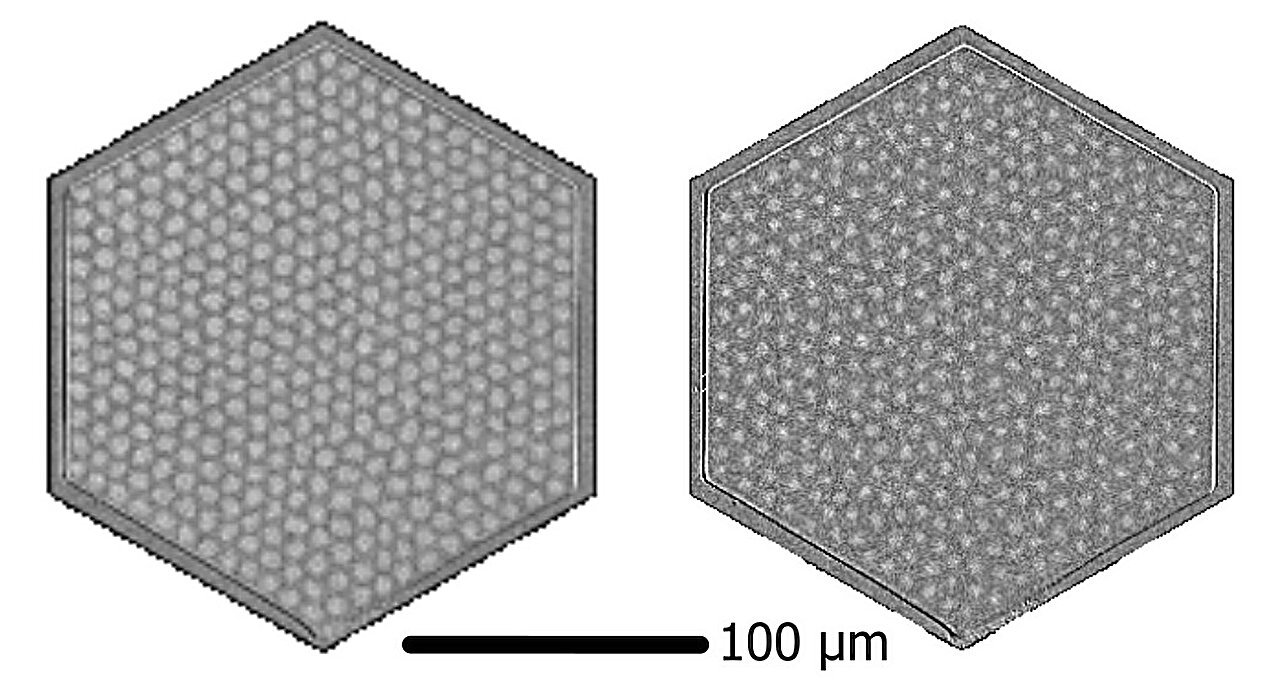
What occurs during the melting process in two-dimensional systems at the microscopic level? Researchers at Johannes Gutenberg University Mainz (JGU) have explored this phenomenon in thin magnetic layers.
“By utilizing skyrmions, i.e., miniature magnetic vortices, we were able to directly observe, for the first time, the transition of a two-dimensional ordered lattice structure into a disordered state at the microscopic level in real time,” explained Raphael Gruber, who conducted the research within the working group of Professor Mathias Kläui at the JGU Institute of Physics.
The findings, published in Nature Nanotechnology, are fundamental to a deeper understanding of melting processes in two dimensions and the behavior of skyrmions, which may revolutionize future data storage technologies.
Two-step melting of skyrmion lattices
While the concept of ice melting into water is familiar to most from a macroscopic perspective, the microscopic aspects of melting processes remain surprisingly poorly understood.
“This phase transition is particularly intriguing in two-dimensional systems, where distinct phenomena emerge, differing from those observed in three-dimensional counterparts,” elaborated Gruber.
Initially, the researchers generated skyrmions, which are magnetic vortex structures analogous to microscopic hurricanes, by precisely calibrating temperature and magnetic fields. Owing to their remarkable stability, skyrmions can be regarded as individual entities. When densely packed, these magnetic vortices self-organize into a regular lattice structure.
“Our primary question was: What happens when we revert this ordered state to a disordered one—in effect, when we melt the system?” said Gruber.
Employing a magneto-optical Kerr microscope, the researchers observed this process in real time for the first time. In contrast to three-dimensional lattice structures, such as ice, the two-dimensional skyrmion lattice melts in a distinctive two-step process. During the initial step, translational order is lost, with individual skyrmions remaining within a lattice, yet exhibiting irregular distances to their nearest neighbors. Only in the subsequent step is the orientation also compromised, culminating in the complete dissolution of the lattice—a melting process.
“The elucidation of this melting transition was greatly facilitated by our collaboration with colleagues from the Center for Quantum Spintronics at the Norwegian University of Science and Technology,” noted Professor Mathias Kläui.
Magnetic-field-induced melting: A novel approach
A distinctive aspect of this experimental design lies in the method used to induce melting. Typically, one would increase temperature. However, this approach is suboptimal in this context, as it would alter the conditions giving rise to the magnetic vortices.
“Instead, we reduced the size of the skyrmions by modulating the magnetic field. This approach afforded the skyrmions greater mobility within the lattice, enabling movement,” explained Gruber. “This strategy, akin to increasing temperature, leads to the lattice structure becoming progressively disordered, ultimately resulting in its complete dissolution.”
These findings pave the way for the potential application of skyrmions in future data storage technologies, offering significantly enhanced data density, rapid read/write access, and exceptional energy efficiency.
More information:
Raphael Gruber et al, Real-time observation of topological defect dynamics mediating two-dimensional skyrmion lattice melting, Nature Nanotechnology (2025). DOI: 10.1038/s41565-025-01977-2
Provided by
Universitaet Mainz
Citation:
Scientists capture real-time melting of 2D skyrmion lattices using magnetic fields (2025, August 4)
retrieved 4 August 2025
from https://phys.org/news/2025-08-scientists-capture-real-2d-skyrmion.html
This document is subject to copyright. Apart from any fair dealing for the purpose of private study or research, no
part may be reproduced without the written permission. The content is provided for information purposes only.




